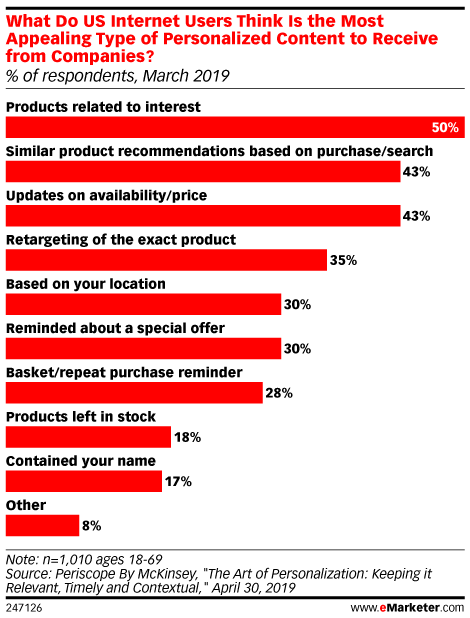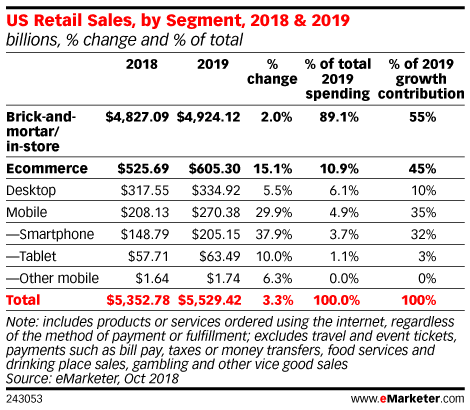5 Ways to Increase ROI and User Retention Through Personalization
With mobile commerce on the rise, personalization is the key to retaining users and increasing ROI. Here are 5 strategies to enhance your mobile personalization strategy.
There is no better way to deliver a superior customer experience than through personalization. In mobile, data-driven personalization can increase user retention as well as decrease the mobile monetization gap and disparity between mobile browsing and purchase. For example, this holiday season, 75% of e-commerce shopping was done on a mobile device while only 40% converted to a sale. The solution to this? Personalization.
According to Sailthru, only 33% of brands in the retail space send push notifications and just 16% send them in response to customer behavior. Not to mention, just 12% of brands take advantage of on-screen real estate to share personalized product recommendations. Another study by Optimizely found that 88% of consumers are more likely to shop with brands that deliver personalized and connected cross-channel experiences. The study also found that 87% of customers say connected, customized experiences would increase their loyalty to the brand.

Source: eMarketer
With all this potential revenue left on the table, there is a huge opportunity for brands to run dynamic re-engagement campaigns that enhance the customer experience through personalization. In addition to serving dynamic ads, here are 5 personalization strategies to maximize user retention and increase your app’s ROI.
Create a Connected Experience
Ideally, your different channels should work together, creating one consistent experience for the customer. One thing that top-rated apps do to differentiate from others in Sailthru’s survey is they create a seamless user experience across websites, email campaigns, and apps. In fact, 88% of top-rated apps share shopping carts across channels.
A great example of this is the Sephora app. If you place items in your shopping cart on the retailer’s website, you’ll see those items in the cart on your mobile app, which also shares recommendations via push notifications and in-app messages. This omnichannel marketing strategy is paying off. Sephora contributed strongly to its parent company, luxury conglomerate LVMH, in 2019, driving 16% year-over-year revenue growth.
Get to Know New Users
When onboarding new app users, let them personalize the experience on their terms. Many top apps take new users through a comprehensive onboarding quiz to get to know their preferences and provide a more relevant shopping experience.
Dollar Shave Club onboards users who download their app by taking them through a questionnaire to learn about their style preferences and grooming habits. This “help me help you” approach makes it easier for the brand to create a personalized customer experience. When a Dollar Shave Club member opens the app, they immediately see the contents and shipping date of their box, as well as personalized recommendations of other items to add.
Loyalty is Lucrative
Loyalty programs are a fantastic way to show appreciation for your most engaged users. Bain & Company found that loyalty, with just an additional 5% of customers, can lead to a 25-100% increase in the growth of profit per user. What’s more, CodeBroker’s Shopper Loyalty Survey found that 70% of consumers are more likely to participate in a loyalty program if they can easily access it from their smartphones. Your loyalty program can be incorporated seamlessly into your app, centralizing your customers’ information: including their activity, preferences and purchase history, putting this data to good use.
Beauty retailer, Ulta, understands that loyal customers are the best customers. It’s ever-growing Ultamate Rewards loyalty program currently boasts 31 million members and lies primarily in its app. In 2019, the beauty retailer’s revenue totaled more than $7 billion, showing a 12.4% increase year-over-year. More than 90% of those sales came from Ultamate Rewards members.
Location Location Location
Location data can be used to tremendously enhance a customer’s shopping experience. Big box retailers can incorporate geolocation into their apps to help customers navigate their massive stores. Brands with membership tiers can also use location data to alert staff when a VIP member walks in to give them a standalone customer service experience.
The Home Depot app uses real-time messaging and geolocation data to bridge the gap between “brick and click”. For example, the app’s “in-store mode” allows users to access store maps and aisle locator features, as well as check inventory in the store where they’re shopping. Home Depot’s commitment to personalization seems to be paying off. In 2019, the company’s net sales were up 1.2% and same-store sales growth, 3%.
Maintain a Messaging Strategy
According to a Sailthru survey about brick and mortar retail, one-third of consumers have been driven to action by a personalized message. The most common instance? Going into a store to redeem a promotion they received via push notification.
Push notifications can offer endless options for engaging your customers. They let people know about promotions and product launches, order status and restocked items. They can also remind users about their abandoned shopping carts. Make sure to match the volume of your messages to a user’s engagement level and time zone so they don’t feel disruptive and result in an opt-out. Short and sweet push notifications are a great way to get customers in your app and keep them engaged in the long-term.
“Brands need to have conversations with customers not broadcast at them”, said Dennis Hegstad, co-founder of texting platform LiveRecover, adding that SMS is a highly personal & sensitive channel. “Use conversational marketing tools like human-powered text marketing solution vs automated chatbots.”
The Thrive Market app uses a strong mobile messaging strategy to keep users engaged. If a user hasn’t opened the app for a few days, Thrive triggers retention messaging with a special incentive to go back into the app and make a purchase. This might be a 20% discount on their next purchase that’s exclusively provided on the app. Not only does this re-engage the user, but it also shows them the app is a place to come back to for future savings.
The Takeaway

Source: eMarketer
E-commerce will grow to $854 billion by 2022. Emarketer predicts that half of this revenue will come from mobile channels. Our takeaways for delivering a hyper-relevant high-quality mobile service to your customers? Get to know their preferences; build loyalty through rewards; use location data to enhance their shopping experience, and serve key messages at the right time.
We also recommend running dynamic re-engagement campaigns that serve relevant ads to users at the right place and time based on real-time data and granular audience segmentation. In the fast-moving, ever-innovating space of mobile commerce, personalization represents a huge opportunity for mobile marketers to win big.

